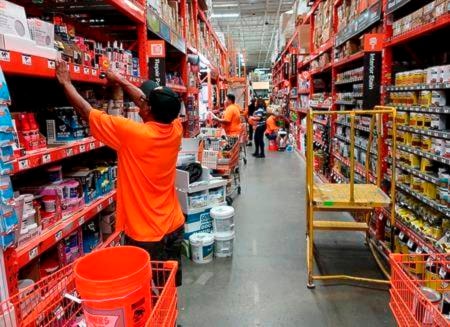ATLANTA — Strains in the nation’s housing sector, coupled with nasty weather across the U.S., took their toll on Home Depot’s sales in the last few months of 2018.
And more disconcerting news about the state of the U.S. housing market could make for a challenging 2019 for the home-improvement giant.
In the fourth quarter, Home Depot Inc. fell short on profit, revenue and same-stores sales as rising real estate prices cast a chill over U.S. home sales.
And the weather was terrible.
“It was cold, it was snowy, and perhaps worst of all, it was wet,” CEO Craig Menear told analysts after the release of the Atlanta-based company’s results. “Wet weather delays projects, and this was evidenced in our sales performance in the quarter.”
The company does not expect its comparable-store sales growth, a key gauge of health in the retail industry, will be as strong this year as it was in 2018.
Home Depot’s stock was down about 2 per cent Tuesday as more bearish news about the U.S. housing market came in: The number of homes being built in December plunged to the lowest level in more than two years, the Commerce Department reported, a possible sign that builders anticipate fewer new homes will be sold this year.
“A material slowdown in the housing market - where both sales and prices have been under pressure for some time — has stymied demand for home improvement products,” wrote Neil Saunders, managing director of GlobalData Retail. “In our view, this has likely affected the momentum of growth at Home Depot.”
Housing starts fell 11.2 per cent in December from the previous month to a seasonally adjusted annual rate 1.08 million. It’s the slowest pace of construction since September 2016.
Supply stores like Home Depot can often thrive when new home sales dip because people will buy existing homes, rather than new.
However, the National Association of Realtors said last week that sales of those homes dropped 1.2 per cent in January to their worst pace in more than three years, signalling that the weakness in the U.S. housing market may be more broad.
Would-be homebuyers are increasingly priced out of the market as years of climbing prices and slim housing inventories put ownership out of reach for many Americans.
Those declines can ripple out to companies that sell materials like Home Depot and its rival, Lowe’s, whose stock slid in tandem with Home Depot on Tuesday. Lowe’s Cos. reports earnings on Wednesday
Home Depot executives, however, pointed to upbeat statistics for the home-improvement industry including American’s rising equity in their homes and the age of U.S. homes.
Chief Financial Officer Carol Tome noted that 52 per cent of homes are older than 40 years. “We know that spend for homes that are 40 years and older is 30 per cent greater than spend on homes less than 10 years,” she told analysts on the company call.
For the three months ended Feb. 3, Home Depot earned $2.34 billion, or $2.09 per share, for the three months ended Feb. 3. That’s far short of the per-share earnings of $2.22 Wall Street was looking for, according to a survey by FactSet, though an extra week in the period helped push profit and sales higher.
A year ago the home improvement retailer earned $1.78 billion, or $1.52 per share.
The current quarter was also nicked by a one-time charge or 16 cents per share.
Revenue climbed to $26.49 billion, from $23.88 billion, with the extra week adding approximately $1.7 billion in sales. But that that too, was short of forecasts.
Sales at stores open at least a year rose 3.2 per cent, also missing Wall Street projections of a 4.5 per cent bump. In the U.S., same-store sales increased 3.7 per cent.
Comparable-store sales are a key indicator of a retailer’s health because it excludes volatility from stores that were recently opened or closed.
Its profit guidance for 2019 issued Tuesday was for $10.03 per share, which is also below Wall Street projections for $10.26.
The company announced Tuesday that it is raising its quarterly dividend 32 per cent to $1.36 per share. It also forecast strong sales growth of about 3.3 per cent and announced a $15 billion stock buyback program.
Home Depot has been steady in delivering outsized profits and revenue quarter after quarter and Menear said the company is eying comparable sales growth of 5.0 per cent in fiscal 2019. That’s better than the 4.3 per cent increase that Wall Street analysts had been expecting, but it’s not as strong as the 5.2 per cent increase seen in 2018.
Industry analysts like Saunders are still impressed with the way Home Depot has operated in a worsening housing environment.
“Home Depot’s comparable sales increases actually look even more respectable - in essence, they show the company is able to pull other levers to secure growth, even as economic fundamentals weaken,” Saunders said.
